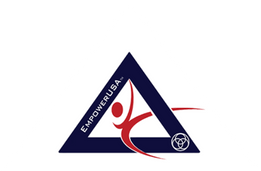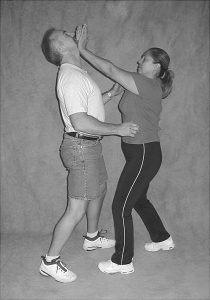Introduction
In the previous article, I identified several personal and professional benefits for including personal safety and
self-defense training in a comprehensive corporate wellness program. Like health education and fitness
training, the outcomes resulting from personal safety and self-defense training include both direct and indirect
financial benefits for a company or organization.
“It will never happen to me,” and “It can’t happen here” – these are common, but naive beliefs typically held
by the public, especially by those who live in “safe” neighborhoods. The days when personal safety was not a
high priority are long gone, no matter where you may live. Today’s society is very different which means that
our behavior and thought patterns need to adjust. Each individual needs to take responsibility for maintaining
his or her personal safety.
In the corporate world, employers and organizations need to be proactive in protecting their most valuable
assets – employees and members. If an entity is going to take on this responsibility, it should be done in a
cost-effective way, while still providing the most comprehensive, high-quality program possible. The
program should be designed and modifiable according to the current and specific needs of the
corporation/organization and its employees/members.
A personal safety training program can provide a positive return on a company’s or organization’s investment
– this should be understood and accepted. The next step is to identify the potential personal safety/self-
defense program options that could be included in a comprehensive, quality training program.
A quality self defense training program should include two major subject areas:
• Personal Safety & Awareness (mental, emotional, environmental, and physical awareness) Training, and
• Physical Skills (simple, practical, realistic, effective methods and skills) Training.
Personal Safety Training
As previously mentioned in an earlier article in this series, Personal Safety training can be provided in a
live (in-person or virtual webinar) format or as an online course. An online course provides numerous
advantages (review this information contained within the initial article in the series).
Personal safety training provides in-depth information that enhances an individual’s knowledge, skills,
and abilities to recognize & avoid, recognize & deal with, and/or recognize & exit from potentially
violent situations. A comprehensive personal safety training should address most or all the following:
• Why Learn Personal Safety/Self Defense
• Legal Liability of Self-Defense
• Confidence & Fear
• Assailants – Who Are They?
• Preparation For and Understanding the Consequences of Conflict
• Principles of Personal Safety
• Pre-emptive Self Defense – When, Why, and How?
• Martial Arts Training versus Self Defense Training
• Fitness Training versus Self Defense Training
• Body Language
• Personal Safety Tips – In Public, At Home, In a Car & Traveling
• Personal Safety Tips – Facing a Weapon
• Predator Lures
• Personal Safety ‘Weapons’ – What You Can Use & How To Use Them
• Things a Burglar Won’t Tell You
Awareness Training
A comprehensive training program covers mental, emotional, environmental, and physical awareness.
• Mental awareness – mental awareness provides the ability to interpret and analyze input from emotional,
environmental, and physical awareness. Mental awareness is necessary for quick decision-making.
• Emotional awareness has two parts:
• Awareness of your own emotional state which helps you to control the external symptoms of
emotions like fear, nervousness, etc. You are less likely to be a target of violence if you appear
confident and in control.
• Awareness of other people’s emotional state. If you learn to recognize the external symptoms of
someone’s emotional state, then you can interact with that person in a more positive way. For
example, if someone you are interacting with is getting angry, you can try to defuse the anger.
• Environmental awareness – awareness of the physical environment you are functioning in. Are you in a
dark alley, a high crime area, amongst a rowdy crowd, in a room with one exit, etc.? Comprehending and
evaluating your environmental “situations” could impact any decisions you make and actions you take if
a personal safety issue arises.
• Physical awareness also has a two-part situation:
• Awareness of your own physical abilities and capabilities?
• Awareness of the potential physical abilities and capabilities of an aggressor.
Self-Defense Physical Skills Training
A good physical skills program supports the personal safety concepts and teaches realistic, effective, and
practical self-defense techniques, which should include:
• Positioning & Distancing – proper stance (non-aggressive, but ready to act) and maintaining distance
from an aggressor.
• Evasion movements – how to move away from an attacker.
• Re-Direction techniques – how to deflect or block an attacker’s grab or strike attempt.
• Striking techniques – how to execute strikes (to maximize power, speed, and accuracy), what parts of the
body can be used for striking and where the target areas are for the various strikes.
• Loosening/Escape techniques – how to get out of and move away from various grabs and holds.
• Self-defense against weapons.
• Ground fighting – how to apply physical techniques while on the ground.
• Environmental-specific considerations – in what environment (small room, elevator, airplane cabin, car,
etc.) you might need to perform self-defense actions.
• How to exit, safely and effectively, after physical self-defense actions are performed.
• Identification of everyday items that could be used as self-defense “weapons” and how to use them.
A good program progressively teaches easy to learn, simple to master, practical, realistic, and effective
physical strategies and techniques – not the TV & movie choreography we so often see.
• The limited time that most people will typically commit to self-defense training makes it necessary to
provide skills that are tailored to an individual’s abilities and capabilities.
• It is better to learn, repetitively practice and become proficient at performing a few techniques than it is to
learn, but not perfect dozens of different techniques.
• Training should be progressive – gradually increasing in complexity (single techniques progressing to
combinations of multiple movements and techniques) and intensity (speed of movement, power of
movement, resistance to movement, etc.).
• Biomechanics should be taught to allow an individual to reach his or her maximum potential for
technique performance speed, quickness, power, accuracy, etc.
Physical self-defense should be the last choice for action, but training for it is necessary to gain the greatest
possible level of confidence. Physical skills training provides the best chance for a successful outcome if
physical self-defense becomes necessary.
Summary of ‘What’
Personal Safety and Personal Safety Awareness Programs can effectively be offered as live training (in-
person or virtual) or as an online training course. The flexibility of the delivery formats makes personal safety
training accessible to anyone at any time! There is absolutely no barrier to providing this training!
Physical skills training should be a live, in-person format. It is critical for a trainer to be able to observe and
evaluate a participant’s movements and techniques in 3 dimensions – all movement is 3 dimensional. To help
an individual attain his or her maximum physical skills potential, the quality of the movements must be
accurately assessed and corrected.
A quality program provides participants with learning progressions that eventually lead to practice time
against “realistic” attacks performed by the instructor wearing full protection so the trainee can fight back
with full power and speed. In this situation, the trainer “attacks” the trainee slowly, with little force at the
beginning, but gradually increases the speed and power of the following attacks until the trainee can perform
at full speed. Experiencing the “adrenaline rush” in this “safe” environment is crucial!
Here is one final training recommendation – the training program should enjoyable. Yes, this is a serious
subject and should be presented as such. But, if a training activity is enjoyed, the information and skills
will be retained better! And, if you enjoy this training, you might discover a whole new fitness activity in
which to consistently participate! But please understand that fitness-specific training is not self-defense
training. However, self-defense training can improve fitness.
For those corporations/organizations who choose a proactive approach in protecting their employees/
members with a personal safety and self-defense training program, I hope I have provided you with practical
and useful guidelines by which to evaluate and choose a program that will meet your needs and expectations.
The next article describes ‘How’ to design and implement a comprehensive personal safety and self-
defense training program that provides the greatest impact for employees of any corporation:
• Determine the exact needs (or what is initially perceived as the exact needs) of a specific, unique group
of participants, and
• Design, structure, and implement a quality personal safety/self-defense training program.
Remember, “ONE BODY, ONE LIFE, ONE CHOICE – BE SAFE & STRONG!”




